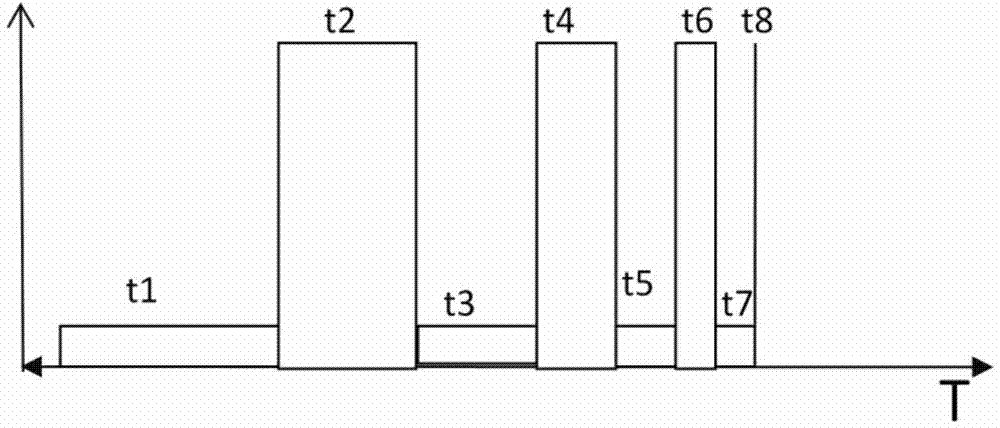Data drive method, data driver and AMOLED displayer
A data-driven, data-driven technology, applied in static indicators, instruments, etc., can solve the problems of insufficient line charging time, loss of gray-scale information, picture distortion, etc., to improve charging speed, reduce charging time, and improve charging efficiency. Effect
- Summary
- Abstract
- Description
- Claims
- Application Information
AI Technical Summary
Problems solved by technology
Method used
Image
Examples
Embodiment 1
[0028] This embodiment provides a data driving method. The driving voltage value is set according to the row charging time of different subframes. When the row charging time G of a certain subframe is i Less than the charging time threshold G th When , increase the driving voltage value V of the subframe di , so that V di >V data ; where i represents the subframe number, V data is the reference driving voltage.
[0029] The row charging time in each of the 8 subframes has been calculated in the background section of this application. For displays with different numbers of rows and columns, the corresponding charging time threshold may be different. For example, for an AMOLED display with 240 rows and 320 columns, the charging time threshold is about 0.9us. In the first six subframes, since there is enough charging time, the reference driving voltage can be directly adopted. The charging time is insufficient for the seventh subframe and the eighth subframe. At this time...
Embodiment 2
[0039] This embodiment provides a data driver, in a row charging time G i Greater than or equal to the charging time threshold G th , its output driving voltage value is V data , V data Is the reference driving voltage; the row charging time G in a certain subframe i Less than the charging time threshold G th , its output driving voltage value is V di and V di >V data , where i represents the subframe sequence number.
[0040] The above-mentioned data driver, when driving, increases the driving voltage value of the sub-frame with insufficient charging time to make it higher than the reference driving voltage value, so as to increase the pixel charging speed of the corresponding sub-frame. How much the specific driving voltage value is increased can be determined according to the row charging time G i with charge time threshold G th To determine the actual relationship, but also take into account the power of the display itself.
[0041] In this embodiment, a preferre...
Embodiment 3
[0045] This embodiment provides an AMOLED display with a structure such as Figure 5 As shown, including: a plurality of pixels, a scan driver and a data driver. A plurality of the pixels are arranged in a matrix form at intersection regions of the scan control signals Sn1, Sn2, and Sn3, and the data lines D1 to Dm.
[0046] Meanwhile, the display unit receives the first power ELVDD and the second power ELVSS provided from the outside. Wherein, the first power supply ELVDD is used as a high-level voltage source, and the second power supply ELVSS is used as a low-level voltage source. The first power source ELVDD and the second power source ELVSS are used as driving power sources of the pixels.
[0047] The scan driver generates scan control signals Si1 to Sin by being externally supplied (for example, from a timing control unit), and sequentially supplies the scan control signals Si1 to Sin to pixels.
[0048] The data drivers generate data and data signals corresponding to...
PUM
 Login to View More
Login to View More Abstract
Description
Claims
Application Information
 Login to View More
Login to View More - R&D
- Intellectual Property
- Life Sciences
- Materials
- Tech Scout
- Unparalleled Data Quality
- Higher Quality Content
- 60% Fewer Hallucinations
Browse by: Latest US Patents, China's latest patents, Technical Efficacy Thesaurus, Application Domain, Technology Topic, Popular Technical Reports.
© 2025 PatSnap. All rights reserved.Legal|Privacy policy|Modern Slavery Act Transparency Statement|Sitemap|About US| Contact US: help@patsnap.com



